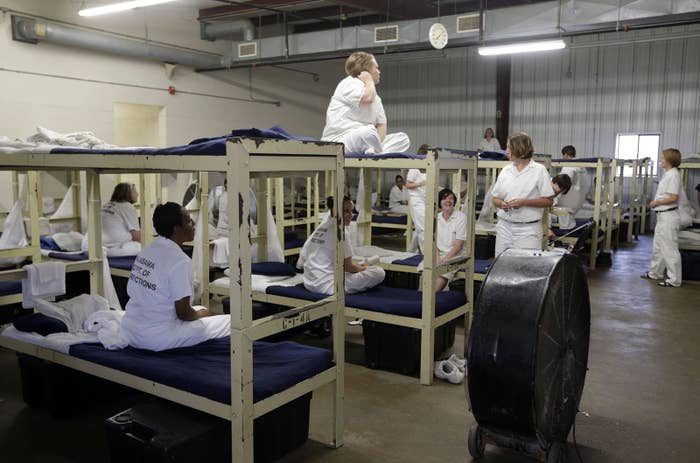
The First Step Act, signed into law by President Donald Trump on Friday, is progressive: For those caught up in the federal justice system, it will reduce or eliminate some minimum sentences, retroactively reduce the sentencing disparity between crack and powder cocaine offenses, and grant the prospect of a sentence reduction to certain inmates.
But the act is, at best, true to its name: a first step. And as befitting a law passed by a male-dominated institution, it fails to advocate for the needs of incarcerated women. Republican Sen. Tom Cotton — an opponent of the bill — has said it would make “sweeping changes to our federal criminal justice system,” a claim that is not only exaggerated, but echoes an all-too-familiar tendency of representatives to forget that “sweeping changes” in social reform cannot materialize if institutional inequalities remain intact.
Legislation like this, which does not address the distinct ways that prisons fail women and their families, will only sustain the growth of the rising population of incarcerated women, which has increased eightfold since 1980 according to the Sentencing Project. By neglecting women, the bill can only undermine Congress’s commitment to prison reform.
For what it’s worth, the First Step Act does not completely ignore women in the system. Specifically, it prohibits the shackling of federally incarcerated pregnant women and includes a vague provision that requires prisons to provide “female health supplies.” But these regulations do not even marginally confront the major issues faced exclusively by incarcerated women. The shackling of pregnant women is not the prison system’s primary maternity dilemma: It’s the severe shortage of both reproductive and postnatal health care.
At any given time, approximately 6% to 10% of incarcerated women are pregnant, according to a 2011 report by the American College of Obstetricians and Gynecologists. Despite most of these being high-risk pregnancies, only 54% of pregnant prisoners received prenatal care, a 2008 Bureau of Justice Statistics report documented. After giving birth, most incarcerated mothers are allowed only 24 hours with their newborns before separation must occur. Contrary to the act’s mission to lower recidivism rates, this separation is proven to psychologically traumatize a mother enough to increase her risk of recidivism.
The act also overlooks the important connection between trauma and women’s incarceration. The increase in the rate of arrest and incarceration over the last two decades is mostly due to more aggressive enforcement of non-serious offenses that are rooted in the experience of abuse and trauma and heavily linked to women offenders. There is evidence that many women who commit violent or aggressive acts often do so in self-defense against domestic violence and sexual abuse. A number of studies have found that about half of imprisoned women report experiencing some kind of physical or sexual abuse, with some studies finding rates of trauma histories as high as 98%.
California prisons are illustrative of this trauma-to-prison pipeline: the ACLU reports that 92% of all women in California prisons have suffered physical or sexual trauma in their lifetimes. Despite the mounting evidence that links trauma to women’s imprisonment, the act lacks even a superficial solution, and this trauma and sexual exploitation continues within most prisons. Incarcerated women are rarely even allowed privacy while showering. Most degrading is that they are often watched by male officers, and face rampant sexual abuse at the hands of correctional officers.
Under the Obama administration, bills such as the Fair Sentencing Act helped decrease the number of incarcerated people. Between 2009 and 2015, the total number of incarcerated men in state prisons fell more than 5%. But let’s not be fooled: These decreases were in the male prison population. The number of women in state prisons fell by less than 1% (0.29%).
It is likely that the First Step Act will have a similar effect. This is because reform measures do not understand the differences in life experiences that men and women bring to the criminal justice system. As a starting point, lawmakers could learn from state-based legislative efforts, such as New York’s Domestic Violence Survivors, which aims to enforce laws that take into account a history of abuse as a mitigating factor for a woman who’s been charged with a crime. Until prison reform efforts consider the unique experiences of women in the prison system, bills like the one that became law on Friday will always remain merely a first step to true justice.
Briana Williams is an attorney based in Los Angeles. She currently sits on the board of Children's Rights, a non-profit, and her writing has appeared in USA Today and elsewhere.
